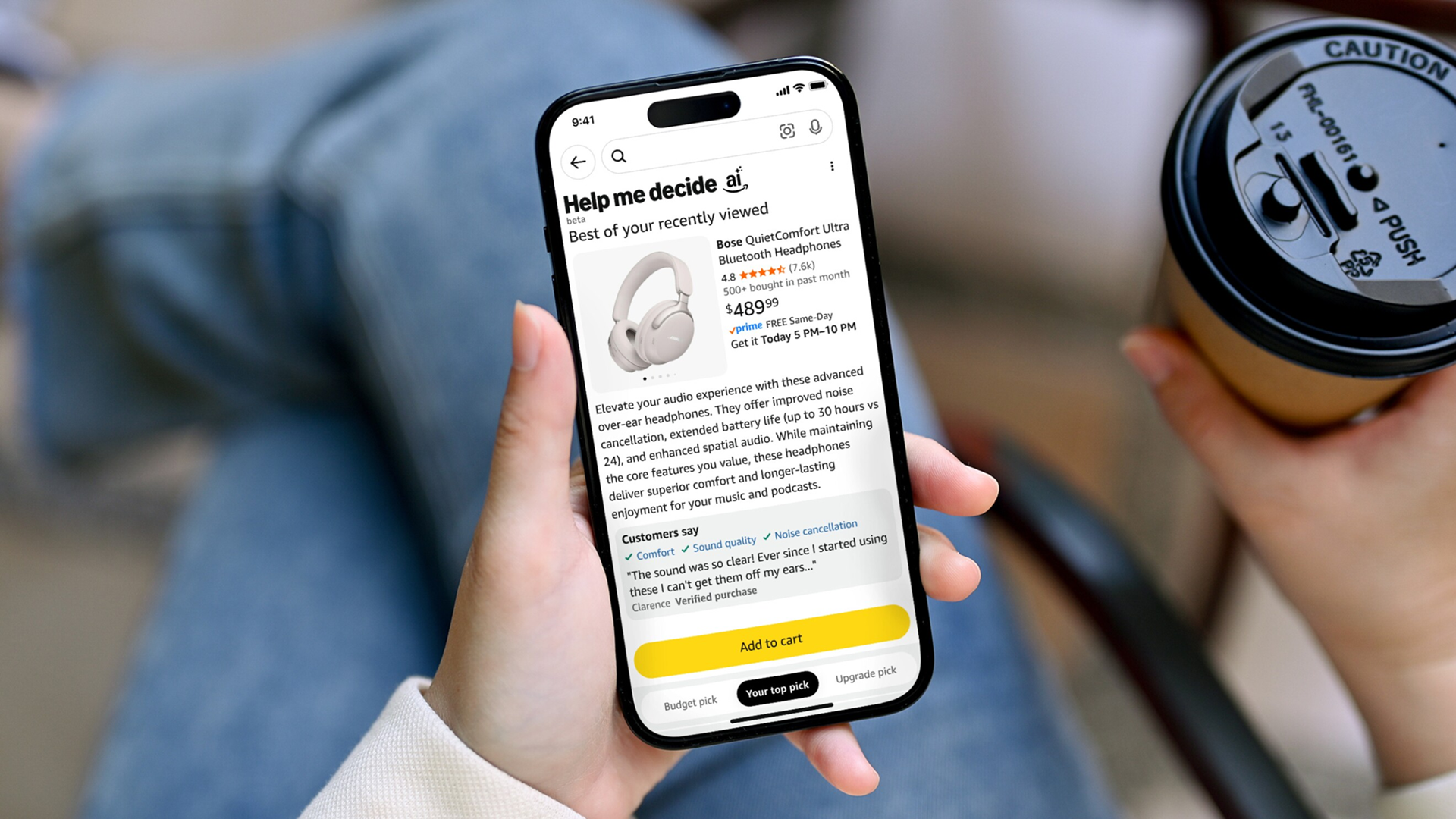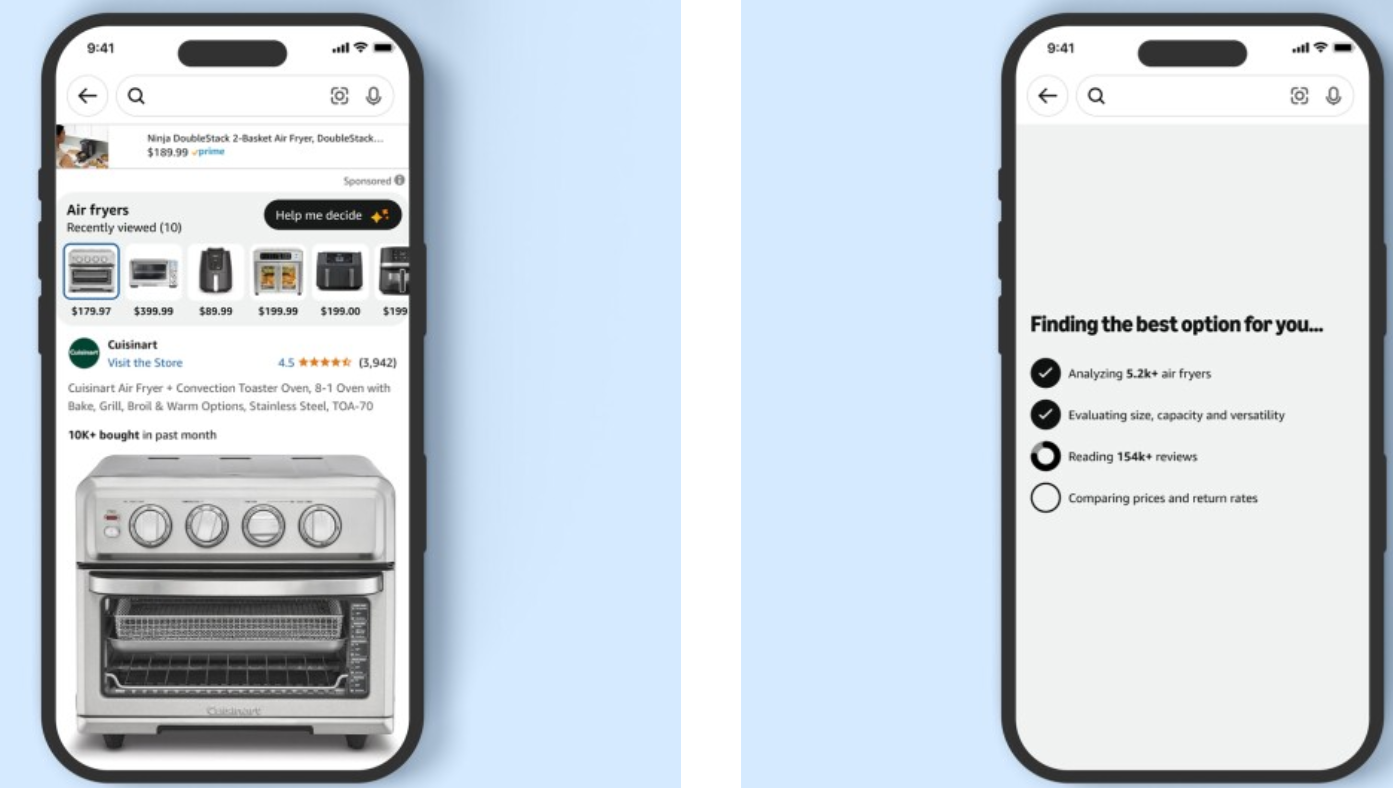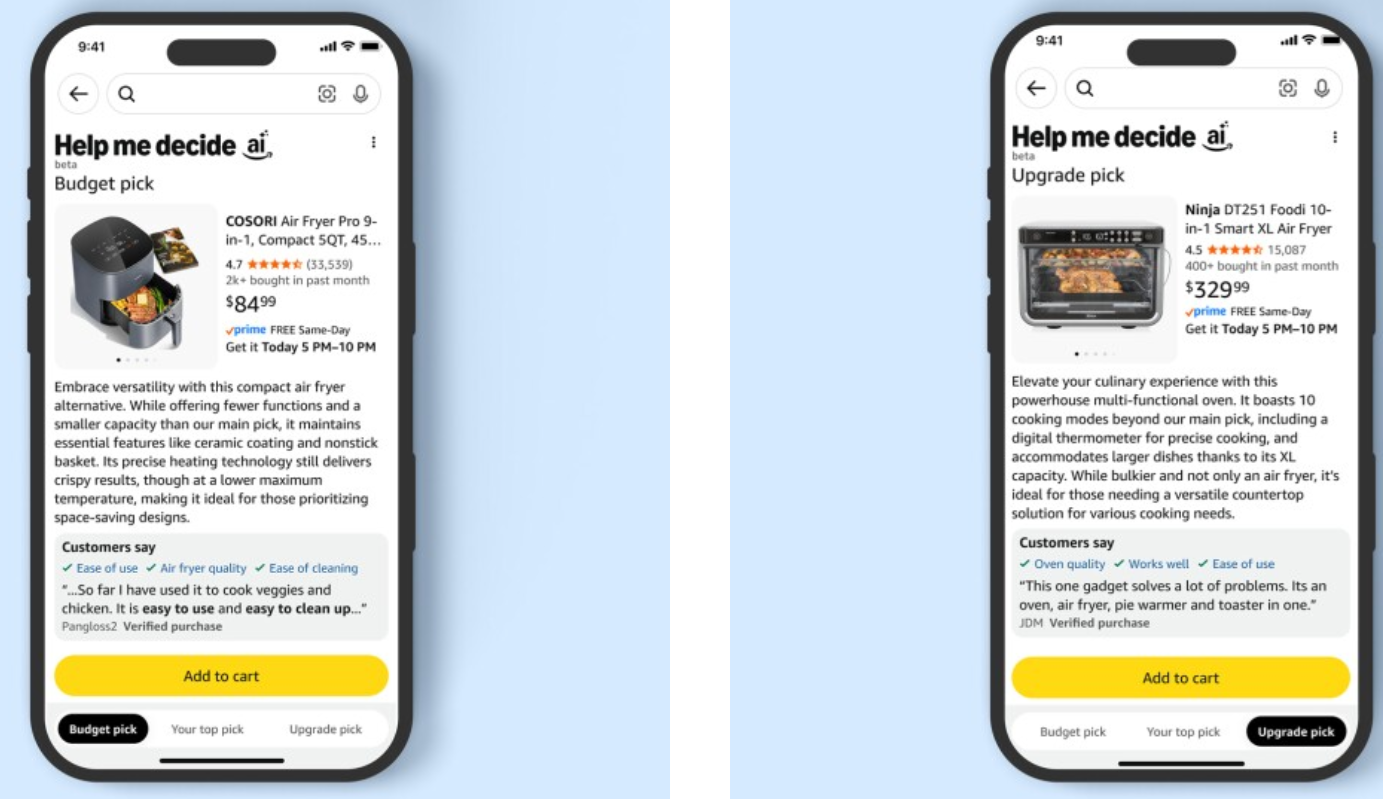Amazon's new Help Me Decide button picks what you were going to buy anyway – just faster

- Amazon’s new “Help Me Decide” feature uses AI to analyze your shopping behavior and recommend a product
- The feature is available in the U.S. on mobile apps and browsers
- The AI makes and explains its personalized suggestions using browsing history and customer reviews
Amazon wants to use AI to reduce the exhaustion online shopping can sometimes induce. The new Help Me Decide button, now appearing in the United States on mobile browsers and Amazon's app, promises to cut to the chase and pick the ideal product for you to buy. No more infinite tab hopping through endless reviews.
The button appears after you’ve been browsing a few similar products at the top of the page. Tapping it sends you to a personalized recommendation based on your browsing history, shopping patterns, and existing customer reviews.
And the AI will break down why it's the ideal choice for you, including relevant features and references to your past purchases. If you want to weigh your options a bit more, it’ll also show you a cheaper alternative and a fancier upgrade.

The button is only the latest effort by Amazon to incorporate AI into its shopping experience, like the recently released Lens Live shopping tool. The button resembles a simplified version of the “Interests” feature, alerting you to products you might care about and the AI-generated personalized “Shopping Guides.” It's like a preset conversation with Amazon's AI conversational shopping assistant, Rufus, in some ways.
But what makes Help Me Decide different from those tools – and, indeed, rival AI shopping features offered by the likes of Google Gemini or ChatGPT – is its assertiveness. Instead of relying on the age-old suggestions based on what people who bought something also liked, the AI interprets your intent and narrows things down to what seems to be the best for you as an individual. It looks at context, not just the keywords in a search.
For instance, if you’ve been looking at photography equipment, it won’t just recommend more and more cameras. It might suggest special lenses or even frames for the photos you take, with strong customer reviews mentioning nature photography.
AI shopping savior

That ability to combine current context with historical behavior could make it one of Amazon’s most persuasive shopping features yet. and also its most subtly influential. The company positions it as a time-saver: a way to eliminate indecision and close the loop between intent and action. And in fairness, that’s exactly what it might be for many shoppers.
Sign up for breaking news, reviews, opinion, top tech deals, and more.
But it’s worth pausing on how powerful this kind of nudging could become. You’ve probably already experienced a more passive version of this system in the form of those uncanny recommendations from Amazon that seem to have listened to your most private conversations or the very thoughts in your head. Help Me Decide takes it further by being specific and identifying the exact product (the AI determines) you were probably going to choose anyway.
For many people, this is a dream come true. Shopping, especially online, can feel like trying to pick a favorite leaf in a forest. No matter how good the filters, reviews, and star ratings are, it can still be exhausting. So the idea of pressing one button and getting (the right) answer might feel like magic. The fact that it comes with a written rationale makes it more trustworthy.
But it also shifts shopping from you choosing the product to choosing whether to accept the product the AI chose for you. That's something akin to hiring a personal shopper, interior decorator, or event planner, but without the human interactions that lead you to trust their understanding of your taste. Some people may find that comforting. Others may feel pushed.
There’s also the matter of data. Help Me Decide relies on deep, individualized behavioral patterns. Amazon knows what you search for, what you click on, how long you hover, and what you eventually buy. Now, it’s using that data not just to recommend, but to select. The more confident and accurate the suggestions become, the harder it is to know whether your preferences are shaping your behavior—or the other way around.
Still, from a usability standpoint, it’s hard to deny the feature’s appeal. The time savings alone are valuable. Whether the future of AI-led shopping sounds exciting or eerie depends on your relationship with shopping and AI. And not even the Help Me Decide button can pick which attitude best suits you.
Follow TechRadar on Google News and add us as a preferred source to get our expert news, reviews, and opinion in your feeds. Make sure to click the Follow button!
And of course you can also follow TechRadar on TikTok for news, reviews, unboxings in video form, and get regular updates from us on WhatsApp too.
You might also like...

Eric Hal Schwartz is a freelance writer for TechRadar with more than 15 years of experience covering the intersection of the world and technology. For the last five years, he served as head writer for Voicebot.ai and was on the leading edge of reporting on generative AI and large language models. He's since become an expert on the products of generative AI models, such as OpenAI’s ChatGPT, Anthropic’s Claude, Google Gemini, and every other synthetic media tool. His experience runs the gamut of media, including print, digital, broadcast, and live events. Now, he's continuing to tell the stories people want and need to hear about the rapidly evolving AI space and its impact on their lives. Eric is based in New York City.
You must confirm your public display name before commenting
Please logout and then login again, you will then be prompted to enter your display name.